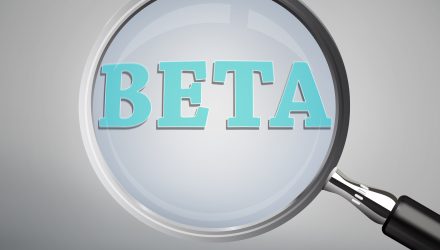The next challenge comes in March 1999 with the launch of QQQ to track the NASDAQ 100. This too is commonly thought of as a traditional beta ETF, but the description of the fund is -quite contradictory.
“QQQ is one of the best established and most traded ETFs in the world. It’s also one of the most unusual. Per the rules of its index, the fund only invests in nonfinancial stocks listed on NASDAQ, and effectively ignores other sectors too, causing it to skew massively away from a broad-based large-cap portfolio. QQQ has huge tech exposure, but it is not a ‘tech fund’ in the pure sense either. The fund’s arcane weighting rules further distance it from anything close to plain vanilla large-cap or pure-play tech coverage. The ETF is much more concentrated in its top holdings and is more volatile than our vanilla large-cap benchmark.” —ETF.com
QQQ is market cap weighted but excludes financials and the selection universe is limited to companies listed on the NASDAQ. Therefore, it is difficult to define QQQ as traditional beta, but it doesn’t seem very smart either.
In May 2000, iShares launched the first suite of Growth and Value ETFs. In hindsight, these appear to be the first true smart beta ETFs even though the term had not yet been coined. Back in 2000, growth and value investing were thought of as style box investing instead of smart beta or factor investing.
In the spring of 2003, three ETFs were launched that most would agree are Smart Beta:
- RSP, The S&P 500 Equal Weight, which started the move to alternative weightings.
- DWAQ, DWA NASDQ Momentum ETF, was the first non-style box factor.
- FVD, Value line Dividend ETF, was the first to focus on dividends.
These ETFs are considered smart beta by almost all investors, but based on our research, the term “Smart Beta” was not commonly used until after 2009; well after WisdomTree (WETF) launched its family of dividend funds between 2006-2007. We are less concerned about the labeling and or the credit and more concerned as ETF Nerds that the integrity of our process be honest with consistent standardized definitions. Why do you ask? At Toroso, we have been working on building the most robust database tool for our Think Tank users and screening through all 2,139 ETFs across factors and methodologies is at the foundation of our database value proposition. Why should you care? How you invest (Smart, Traditional or Active) sets the path for you to have the discipline for knowing how these solutions will work in different markets.
This article was written by the team at Toroso Asset Management, a participant in the ETF Strategist Channel.
Click here to see disclosures.
Related Articles:
Let’s Talk Astrology & Markets

